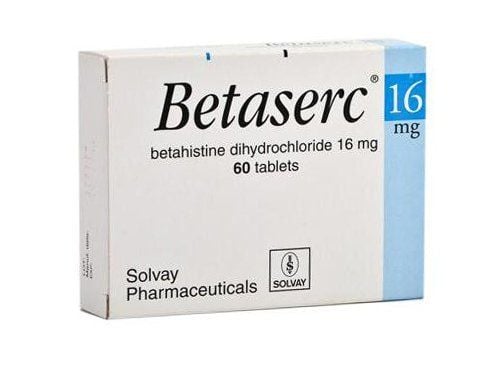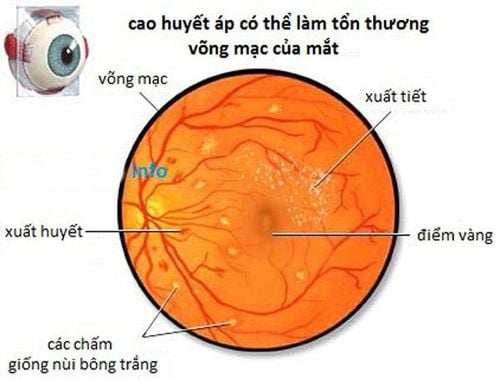This is an automatically translated article.
Becotarel belongs to the group of drugs used to treat cardiovascular diseases, containing Trimetazidine dihydrochloride 20 mg and is used to prevent angina attacks. To ensure the effectiveness of using Becotarel, users need to follow their doctor's instructions and refer to the following article for more information about the uses of Becotarel.
1. What is the use of Becotarel?
1.1. What is Becotarel? Becotarel belongs to the group of cardiovascular drugs, with registration number VD-27402-17, manufactured by Meyer-BPC Joint Venture Company - Vietnam.
Becotarel is prepared in many forms:
Film-coated tablets of 20mg, blisters of 30 tablets, boxes of 2 blisters. Extended-release (MR) film-coated tablets 35mg, blisters of 10. Oral solution of 20mg/ml, 60ml bottle capacity with metered-dose pump. Becotarel tablets include the following ingredients:
Main active ingredient: Trimetazidine dihydrochloride 20mg Excipients: Lactose, corn starch, PVP K30, Talc powder, magnesium stearate, eudragit, HPMC, PEG 6000, Titanium dioksid, red erythrosin and ponceau lake. Becotarel is recommended for use in adults.
1.2. What is Becotarel used for? In subjects with angina, the active ingredient trimetazidine increased the coronary exercise response from day 15 onward, reducing abrupt changes in exercise blood pressure without altering heart rate, causing a marked reduction in the frequency of angina attacks. Trimetazidine also improves vestibular maneuvers and is used in otolaryngology as an adjunct to therapy for vascular vertigo or vertigo in meniere's disease.
In addition, in ophthalmology, Trimetazidin also improves the electroretinogram, which improves the functional activity of the retina.
Becotarel is prescribed by doctors for use in the following cases:
Prophylactic treatment of unstable angina that is not adequately controlled or in patients who are intolerant of other angina therapies . Support treatment of symptoms of tinnitus, dizziness. Adjunctive treatment in severe visual impairment and visual disturbances of circulatory origin. Contraindications:
Patients who are allergic to the main active ingredient Trimetazidin or any of the excipients listed above of the drug. Patients with severe renal impairment (with creatinine clearance less than 30ml/min). Parkinson's patients often have Parkinson's symptoms, tremor, restless legs syndrome and other related movement disorders.
2. Usage of Becotarel
2.1. How to take Becotarel Becotarel is used orally in any dosage form. Patients need to take Becotarel with a sufficient amount of filtered water, should be taken with meals. Do not crush, crush the tablet or mix it with other mixtures for oral administration (especially for slow-release, film-coated tablets). With oral syrup, use the included graduated pump to determine the dose of oral drugs, do not use other measuring devices. Do not arbitrarily add or reduce the recommended dose of Becotarel or the dose prescribed by your doctor. Carefully read the leaflet that comes with the medicine box before use. 2.2. Dosage of Becotarel The usual recommended dose is 40mg or 60mg over 24 hours.
Treatment of coronary insufficiency:
20mg tablet form: Take 1 tablet each time x 2-3 times/day. RM 35mg tablet, take 1 tablet twice a day, morning and evening. Then the dose can be reduced to 2 times / day, 20mg each time. Syrup form 20 mg/ml: Use metered suction pump 20/time (1ml/time) x 2-3 times/day. Treatment in ophthalmology and otolaryngology:
Take 2 to 3 tablets (20mg tablets) or 40 to 60 drops of syrup x 2-3 times at main meals. Patients with moderate renal impairment (creatinine clearance 30-60ml/min): Take 2 times a day in the morning and evening, 1 tablet each time, with meals. For patients with moderate renal impairment (creatinine clearance 30-60ml/min): The recommended dose is 1 tablet each time, taken twice a day in the morning and evening, after the main meals. Handling missed dose:
Take the dose of Becotarel as soon as you remember it, but remember to have a snack before taking it. Usually, medications can be taken about 1 to 2 hours later than the time prescribed in the prescription. However, if the current time is too far from the time it should be taken after each meal, skipping the missed dose of Becotarel and never doubling the dose can be dangerous to the user's health. Treatment of overdose:
In case of accidental or intentional overdose of Becotarel, gastric lavage and full body support measures must be performed.
3. Precautions when using Becotarel
Becotarel may cause or worsen Parkinson's disease (tremor, slow movement difficulty, increased muscle tone). Therefore, patients, especially elderly patients taking this drug need to be examined and monitored regularly. In doubtful cases, the patient should be taken to the neurologist for examination and treatment. When experiencing movement disorders such as Parkinson's symptoms, restless legs syndrome, tremor, unsteady gait, it is necessary to immediately stop using Becotarel. These cases are rare and usually recover well after stopping Becotarel. Most patients recover after 4 months. If Parkinson's symptoms continue after 4 months of stopping treatment. A specialist neurologist should be consulted. Falling, unsteady posture, or hypotension may occur, especially in patients taking antihypertensive drugs. Because the excipients contain lactose, patients with galactose intolerance, glucose-galactose malabsorption, Lapp lactase deficiency should not use Becotarel. When used for pregnant or lactating women, the effect for the mother should be weighed against the consequences for the child. Therefore, only use the drug after talking with your doctor. Becotarel is not used to treat angina pectoris, but only as a prophylaxis. Becotarel should not be used as an initial treatment for myocardial infarction or unstable angina. Becotarel should not be used in the pre-hospitalization period and during the first days of treatment. In the event of an angina attack during drug administration, the patient's coronary disease status should be re-evaluated in order to institute appropriate treatment. Do not use expired medicine, lose its seal, mold, or change color, open packaging.
4. Becotarel side effects
During the use of Becotarel, patients may still experience side effects such as:
Common:
Effects on the nervous system: Headache and dizziness; Gastrointestinal: Abdominal pain, dyspepsia, nausea, vomiting and diarrhea; Body as a whole: Asthenia; Skin: Rash and urticaria. Rare:
Cardiovascular system disorders: Palpitations, palpitations and tachycardia. Arterial hypotension, orthostatic hypotension, can lead to dizziness or falls, especially in patients being treated with antihypertensive drugs, flushing. Frequency not known:
Parkinson's symptoms, unsteady gait, restless legs syndrome, other related movement disorders, usually reversible upon discontinuation of the drug. Sleep disturbances (drowsiness, insomnia). Constipation. Acute generalized exanthematous pustulosis (AGEP), angioedema. Agranulocytosis, thrombocytopenic purpura, thrombocytopenia, hepatitis. If you experience these symptoms, the patient should stop using Becotarel and notify the doctor for appropriate treatment.
5. Becotarel drug interactions
Currently, there has been no recorded interaction between Becotarel with any drugs. In particular, there is no interaction between Trimetazidine and beta-blockers, nitrates, calcium antagonists, heparin, anti-dyslipidemia or digitalis. However, to be safe, patients should avoid taking Becotarel with MAO inhibitors. Patients still need to carefully monitor for unusual symptoms and signs when combining Becotarel with other drugs.
6. How to store Becotarel?
Becotarel is preserved for 36 months from the date of manufacture. Store the drug below 30 degrees Celsius in a cool, dry place in the original packaging, avoid direct sunlight to change the drug. Keep Becotarel out of the reach of children. Above is the complete information about the drug Becotarel. Because this is a drug prescribed by a specialist, the patient should absolutely not use it at home because there may be unwanted side effects.













